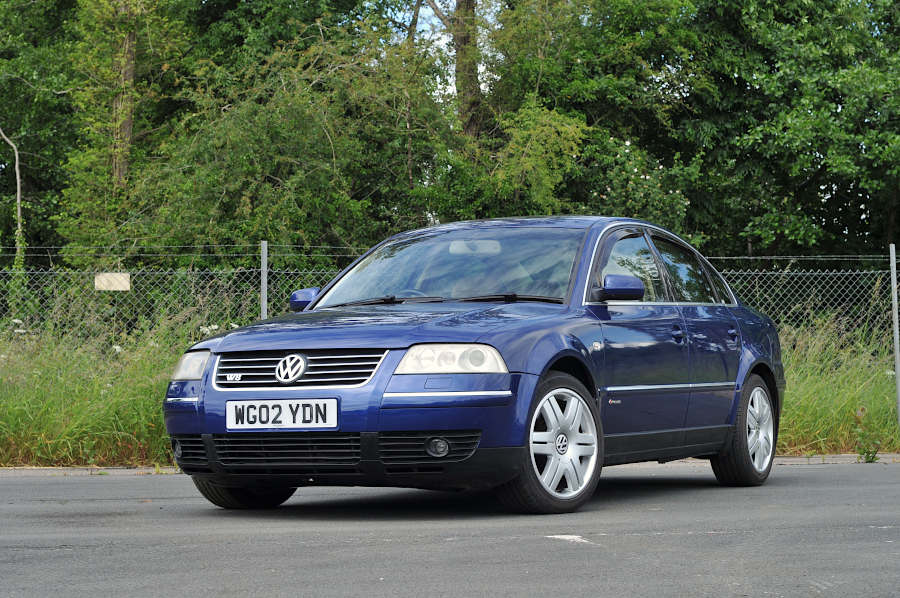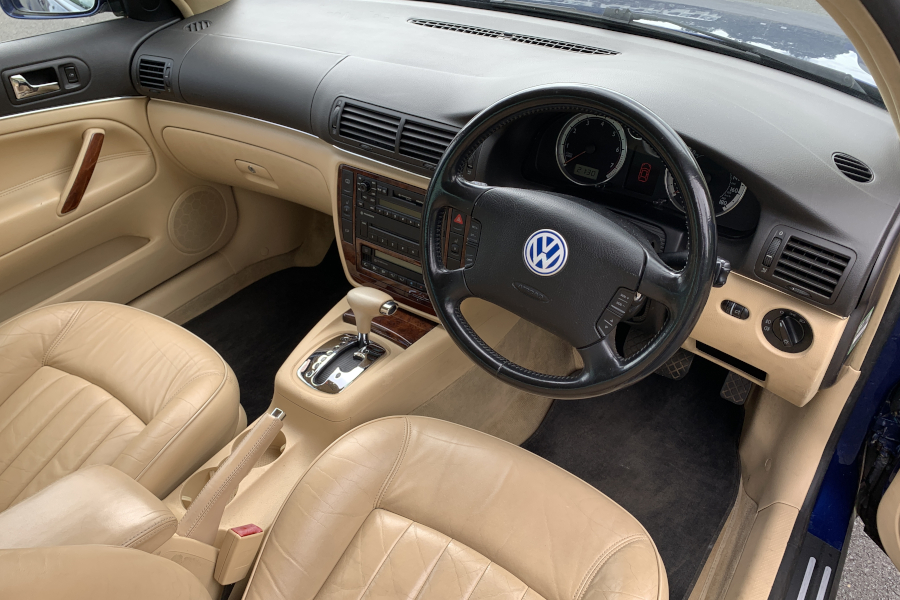We revisit the Passat W8: the mad result of stuffing a 4.0-litre W8 engine into VW’s most conservative model
Words and images: Paul Wager
So here’s a question for the VW anoraks out there: what is the firm’s longest-serving model name? It’s not the Golf, nor is it the Polo… but the Passat which arrived in 1973 and has been a beacon of steadiness ever since. The German middle class’s answer to Mondeo man if you like.
The Passat started out as a badge-engineered Audi 80 before going its own way in the ’90s and it’s generally reckoned that the 1997 ‘B5’ generation was a turning point for the model where it became more Audi and less people’s car, with interior quality and pricing to match.
It’s no surprise that this coincided with the legendary Ferdinand Piëch stepping up to the top job at Volkswagen, the man who would later bring us the magnificent folly that was the Phaeton, alongside other notable VW landmarks.
Clearly Herr Piëch had designs on the BMW market and when in 2001 the sturdy Passat range received its ‘B5.5’ facelift, something slipped into the brochures which must have had the proof readers asking questions: alongside the sensible-shoes PD diesels and the V6 there was a ‘W8’ model listed.
Students of Bugatti and Bentley will know all about VW Group’s W-configuration powerplants which are essentially modular developments of the original VR6 concept combining a narrow vee angle with a single head and the W8 powerplant is essentially a VR6 with a pair of extra pots… or half a Bugatti W16 if you prefer.
Complicated to engineer it may be, but the advantage of the W layout is that it’s even more compact than the traditional V8 engine, this being pretty much the only way eight cylinders could be squeezed between the front wings of the Passat.

In 4-litre form the W8 was good for 271bhp and 273lb.ft which explains why the Passat W8 also received the 4Motion all-wheel drive.
In fact it’s the red ‘4’ on the 4Motion badging which is one of the more obvious clues to the W8’s identity, since the car is otherwise a model of restraint. The 17-inch wheels and quad tailpipes are evident on a closer look but the ‘W8’ badging is superbly discreet.
Back in the day, road testers were impressed by the 4-litre Passat, if a little confused as to why it existed in the first place and Volkswagen even managed to register a fair few in the UK – presumably most of them to execs at the firm’s Milton Keynes headquarters who were denied an A6 company car.
Today though, there are reckoned to be less than 50 on the road, so when this example popped up for sale at Brightwells, we shot over to sample the millennial Volkswagen highlight.

First impressions are of how very low-key the car is and it’s here that you get a glimpse into the target market, particularly in Germany. Here is a car which will sit at a limited 155mph on the autobahn yet will fly under the radar if you prefer to keep quiet about your success.
Inside, it’s mostly standard Passat fare: spacious, comfortable and of course, highly specced with leather, Climatronic, heated electric seats, cruise control and all the other kit. Aside from the prominent chromed gate to the shift lever (a conventional automatic in the W8 rather than a DSG) the interior is all much as it would be in an optioned-up TDI. Except, that is, for one crucial difference: the speedometer marking reads right up to a staggering 180mph, hinting at the potential of the car without its electronic limiter.
The W8 fires immediately and compared to the other W engines I’ve sampled it’s remarkably refined. The W12 in the Bentley Continental sounds very busy and in truth is more sporty than refined, but the eight-pot version is exactly what you’d expect in a luxury saloon – hushed, but with an underlying burble which hints at its potential, assisted by twin counter-rotating balance shafts.
The W8 was offered as both saloon and estate and with both manual and automatic options, although the automatic was the more common. Certainly it suits the demeanour of the car perfectly, although I can definitely see the appeal of the manual – especially in estate form.

Step-off from standstill is as gentle as you’d expect and at low speeds the car is a docile companion, but an exploratory squeeze of the pedal reveals its other persona and a lovely muscular burble. Despite the 4Motion, full-bore standing starts aren’t its party trick but rolling acceleration is impressive, the power and torque combining with the automatic to make it a credibly capable cross-country weapon. Official figures give the automatic a 7.8-second 0-60mph time, with the manual getting there in just 6.5 seconds.
The 4Motion models gained an independent rear set-up and naturally, the suspension was beefed up over the regular model with what was essentially the sports package, but the W8 retains the composure of the cooking Passats and without the air suspension of bigger Audi and Bentley models is actually happier on potholed British roads.
Perhaps unsurprisingly, the Passat W8 was destined for a short shelf life, being discontinued when the transverse-engined B6 generation arrived in 2005, at which point the V6-engined R36 would be the performance model with the common rail diesels providing real-world pace.
As a beacon of lunacy in the steady life story of the Passat though, the W8 is a brilliant diversion.
Thanks to Brightwells, where you’ll find the Passat W8 in our photos in the Online Garage sale. Bidding is open now and ends on Thursday, June 20 from 2pm.
The 2002 example is estimated at £4000-£5000 and shows just 68,988 miles. In impressively original condition, it’s very much on the button and has clearly been properly maintained. More details here.














